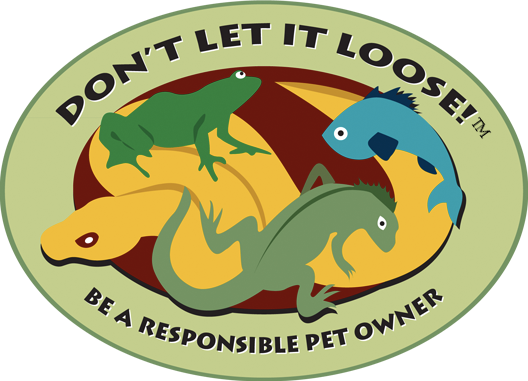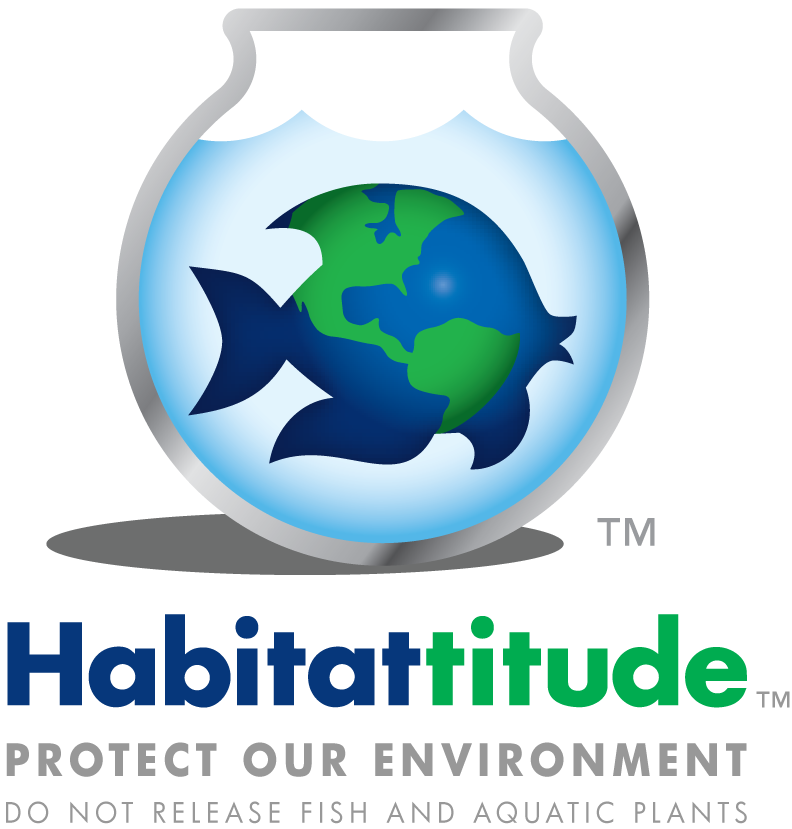
Resources
Promoting Responsible Pet Ownership
Whether you can no longer care for a pet or you’d just like to learn more about how pets can become invasive species, these resources will help.
Education Animations
Take a Bite Out of Bullfrogs
Bullfrogs sure are bad invasive species! Learn about what they sound like, what they look like, and why you should keep your eye out for them. And if you’ve got a bullfrog, learn why you don’t let it loose. Thanks for watching!
Don’t Let it Loose FAQs
Answers to your most commonly asked questions about pets becoming invasive species.
Can pets really be invasive species?
Some pets when released into the wild can become invasive species. So, if the conditions are right, pets like goldfish, some reptiles, amphibians and invertebrates like snails or crayfish can become invasive species. If someone is dumping an aquarium, then everything in the aquarium goes. It’s not just the fish, but the snails, water plants, and anything else in the tank. All this stuff has the potential to become an invasive species.
What does it mean to be an invasive species?
There are legal and scientific definitions to describe invasive species, but the key ideas here are that non-native species (plants, animals, or microscopic creatures) get introduced to a new area or habitat, become established (aka happy and healthy), and cause harm to either the habitat, to other creatures, or to human health.
How do invasive species harm habitat?
An invasive species does things like burrow into banks of a river causing them to collapse, or growing so thick that no other species can live there, or changing the water chemistry so that it is inhospitable for native species.
What does it mean for an invasive species to harm native species?
When an invasive species takes available food, prime habitat, or literally eats anything it can get in its mouth, these vital changes can affect native species survival.
In cold climates, can a released pet actually become an invasive species?
The short answer is yes. There are definitely conditions that make it hard for tropical plants and animals to survive freezing temperatures and snow, but Don’t Let it Loose is about helping pet owners make responsible choices. Regardless of where you live, releasing a pet is not a humane or responsible choice.
How can I find out what species are considered invasive?
Many states have identified different species that are of concern and have restricted their sale, possession, and sometimes transport. Check with your state wildlife or agriculture agency to find out what species are regulated and how they are being regulated. Chances are many of these species are listed because of their potential to harm.
Helping Native Species
MT FWP Don’t Let it Loose Pets
Montana Fish, Wildlife and Parks’ Torrey Ritter talks us through why rehoming, rather than releasing, exotic pets helps native species.
More About Native Species
MT FWP on Native and Non-Native Species
Montana Fish, Wildlife and Parks’ Torrey Ritter discusses how non-native species outcompete native species, and what we can do to help native species.
Instructions for Moss Ball Aquatic Plant Disposal
The Pet Industry Joint Advisory Commission has released guidance on how to handle Moss Ball Products suspected of harboring zebra mussels. If you suspect that you are in possession of a mussel-infested product and would like to dispose of it, please follow their recommendations or that of your state’s Fish and Game department. View their guidance here.
ATTENTION ALL EDUCATORS
Do you have a classroom pet? Are you looking for a fun, engaging lesson to bring the ideas of responsible pet ownership and invasive species prevention to the classroom? Take advantage of our free classroom teaching tools focused on Don’t Let it Loose. These tools have been designed for K-6th grade educators but can be adapted to all age levels!
Use the links below to download and print our educator toolkit.
These materials were made in collaboration with Montana Fish Wildlife and Parks.

